If you’re a property/building owner, you’ve probably been asking yourself, “are energy-efficient appliances worth it?” a lot lately. The truth is, the pros of energy-efficient appliances far outweigh the cons… but it does require an upfront investment. In this post, we’ll teach you how to tell if your appliances are energy-efficient, all the benefits, and what to keep in mind when shopping.
Aggressive Energy is committed to helping our clients make the most sustainable choices for their energy consumption and their budget. Whether you’re just looking for energy efficiency tips to save money or want to create an electricity plan that makes energy compliance easy, we’re here to help!
Read on to learn if energy appliances are worth it!
How to Tell if Your Appliances Are Energy Efficient
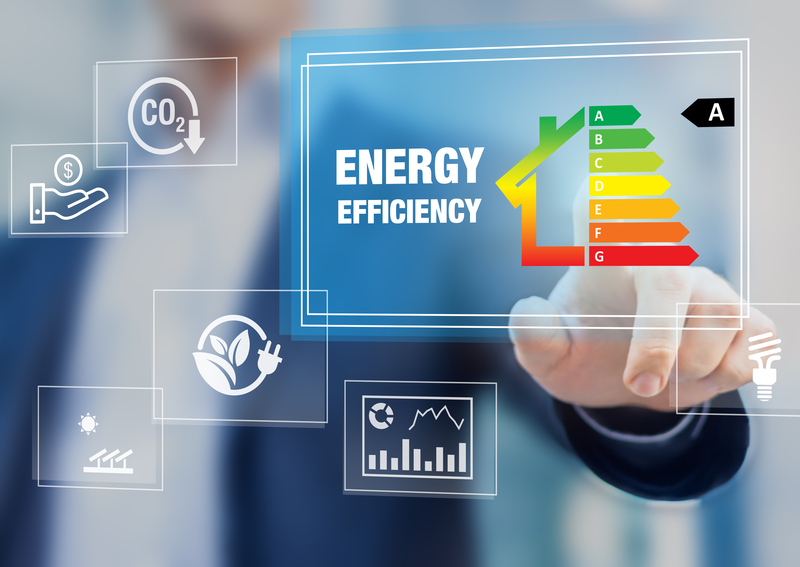
All EE appliances will indicate their efficiency level on the energy guide label, which tells you the estimated annual energy use of the appliance. Reading the label can also help you compare the appliance’s energy efficiency and annual energy consumption to that of similar models across different brands. You should also look for an Energy Star label. Appliances that have this logo are substantially more energy-efficient than the standard model.
What does Energy Star mean?
Operated collaboratively by the U.S. Department of Energy and the U.S. Environmental Protection Agency (EPA), the Energy Star program is the best indicator of ultimate efficiency and savings. Think of the Energy Star label as a guide when shopping for energy-efficient appliances for your business.
In order for an appliance to be Energy Star compliant, it must meet the first-class energy efficiency requirements set by the government-backed program. And, it must do so without sacrificing quality. Energy Star appliances use less energy, which means your electricity bill will be less, too. All while helping protect the environment by reducing harmful emissions.
Related Post: How to Make Reducing Carbon Emissions a Priority
Benefits of Buying Energy-Efficient Appliances

Energy-efficient appliances often come with a higher price tag. In most cases, price is the biggest deterrent. Business owners can’t help but ask themselves: Are energy-efficient appliances worth it? The answer is yes – here’s why.
Energy-efficient products lower electricity bill
Energy-efficient products are guaranteed to lower energy expenses, even if you have appliances that are continuously running. The average home appliance lasts between 10 and 20 years, while Energy Star compliant appliances consume between 10% and 50% less energy annually than their non-energy efficient counterparts.
Recieve tax credit for energy-efficient appliances
The Energy Policy Act of 2005 (EPACT) allows businesses to deduct the cost of energy-efficient upgrades to commercial buildings. Buildings that save at least 50% of the heating and cooling energy of a system can deduct up to $1.80 per square foot. Partial deductions for the building envelope, lighting, or heating and cooling systems are available up to $.60 per square foot, too. For more information, see the 179D Commercial Buildings Energy-Efficiency Tax Deduction page.
Enjoy an energy-efficient appliance rebate
Energy Star partners offer incentive rebates to encourage consumers to purchase more energy-efficient appliances. The rebates vary depending on your location and the appliance purchased but are usually anywhere from a couple hundred to one thousand dollars. To find energy-efficient appliance rebates in your area, simply go to the Energy Star rebate finder and type in your zip code.
Energy-efficient products are more convenient
One thing to keep in mind when it comes to energy-efficient commercial appliances is that they function with your needs rather than against them. For example, refrigerators that are energy efficient use less energy to achieve colder temperatures faster. This provides you with the advantage of preserving the freshness of your goods for a longer period of time. So when you pay the amount an energy-efficient appliance costs, you’re getting a product that works more efficiently, too.
Related Post: Renewable Energy Trends and Green Energy Industry Facts
Buying Energy-Efficient Appliances

Now that you know why energy-efficient appliances are worth it, it’s time to get into buying them. Here’s a step-by-step guide to buying energy-efficient appliances.
1. Measure the space your new appliance will be stored in
Always be sure you know the measurements of your space so you can ensure the appliance you’re looking at will fit. It can’t be a tight squeeze, either- you have to be sure you have enough clearance for ventilation. You’ll also want to be sure you can open/close a lid if applicable.
2. Check your area’s Energy Star rebates to choose an appliance
If you aren’t sure where to start when replacing your old appliances with new, energy-efficient ones, then start by browsing the Energy Star rebate finder. That will help you set a budget for the purchase, too.
3. Weigh the appliance’s estimated energy use as much as its price
When making a buying decision, sometimes you just have to go with whatever’s in your budget. However, you can actually save money by buying the more expensive model if it’s significantly more energy efficient. If you want to maximize your ROI and are able to put a little bit more into your investment, you’ll thank yourself later.
4. Take the time to make a thoughtful decision
Remember, this appliance will last you a long time. Always take the time to read the appliance’s energy guide and compare/contrast it against similar models. Don’t be afraid to ask your energy provider for their opinion, too!
Related Post: Why Solar Power for Business is Worth the Investment
Are Energy-Efficient Appliances Worth it?
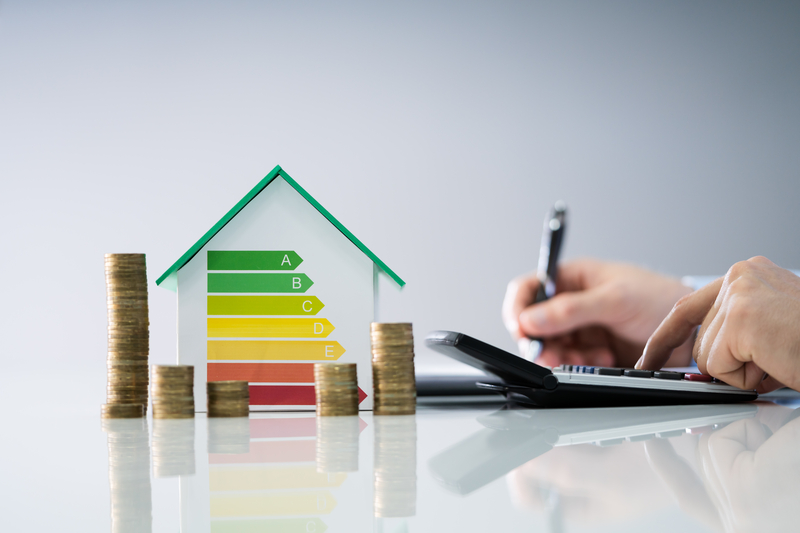
In short, the answer is yes, energy-efficient appliances are worth the investment. When you replace inefficient appliances in your house, you can save hundreds of dollars per year on your energy bill. While the savings from one energy-efficient appliance may seem insignificant on its own, keep in mind that your commercial appliances will last between 10 and 20 years. Those small monthly savings will add up over time, and in most cases, the higher energy-efficient appliances cost will be repaid by the energy savings. Plus, with the Energy Star rebate and tax credits for energy-efficient appliances available to businesses, the cost may not be as high as you think!
At Aggressive Energy, we’ve got the dedication and resources to set you up for success. We’ll help you choose the most energy-efficient options for your business to help you meet your sustainability and financial goals. Contact us today!
This article is your complete guide to installing the best solar battery for your business. Because if you’ve taken the plunge and invested in installing solar panels for your business, we recommend you look into installing an energy storage system using a solar battery to maximize the benefits of using renewable energy. Battery energy storage, in general, is always a smart decision as it improves the reliability of your power source and helps decrease your energy bill while increasing your sustainability.
As energy technology continues to advance, it’s important to keep up with renewable energy trends and innovations available to you that will upgrade the way you manage your energy consumption. At Aggressive Energy, we have access to the most efficient energy resources and are dedicated to creating an energy plan that maximizes our client’s ROI. Contact us today to see what we can do for you!
If you’re ready to learn more about solar battery energy storage systems, read on!
What is a Battery Energy System?

Battery energy storage systems store excess energy generated by solar panels and/or other renewable power sources to use when needed later. They typically include built-in software that is used to operate and control the system. With their simple installation and low level of required maintenance, we believe solar batteries are the future of energy storage.
How do solar battery backups work?
- The battery is charged by solar panels
- The system software optimizes the use of stored solar energy
- Stored energy is discharged when you need it, and/or at the most cost-effective times
So instead of transferring any unused solar energy to the grid, you’ll use that energy to charge your solar battery storage system. Then, if you use electricity after the sun has set, you’ll draw from your solar battery instead of the grid.
Advantages of Solar Battery Energy Storage Systems
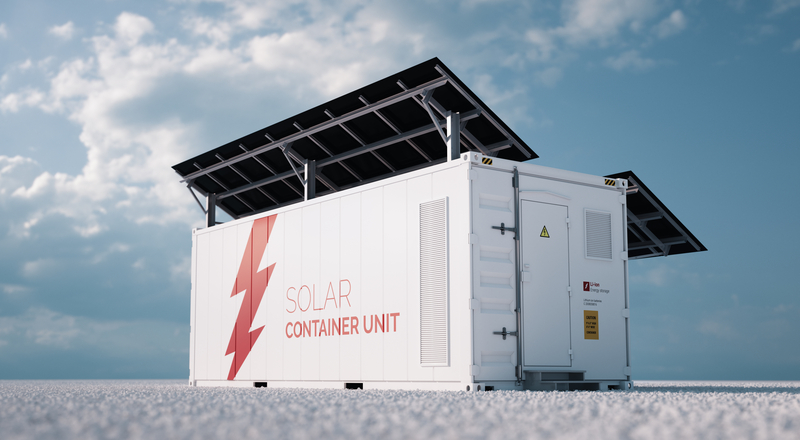
With a solar battery energy storage system, you’ll have the option of using electricity from the grid or your solar battery. This gives consumers more power over their energy consumption and monthly bill. Here are the main advantages of battery energy storage systems.
Batteries allow you to peak-shave energy prices
You can save a lot of money with on-site battery energy storage by charging the batteries during off-peak hours when electricity pricing is the cheapest. This process is called peak-shaving because it allows you to use energy during peak hours without paying peak price. Batteries can accomplish this in two ways depending on the type of rate plan you’re on. If you are on a time-of-use or other time-varying rate, you can draw electricity from your solar battery during periods during peak hours. If you are on a demand charge rate – which is more common for commercial businesses – battery storage can help you save money each month by lowering your demand fee.
Related Post: When is the Cheapest Time to Use Electricity?
Storage battery systems help reduce carbon footprint
Not only do batteries make it easy to use energy efficiently by making sure you use what you generate, but they’re also a great way to operate sustainably. Renewable energy battery storage for resources like solar power decreases your energy system’s reliance on the grid, which was powered only 12% by renewable resources in 2020. It ensures that you use all of the clean energy generated from your solar panels, making you less likely to use nonrenewable resources thus cutting down your direct and indirect carbon emissions.
Battery storage gives peace of mind during outages
While you will remain connected to the grid, you will be able to function “off-grid.” By using a combination of solar power and energy storage you’ll be able to keep your power on and functioning normally, even during a storm or power outage. If you only have a solar panel system without a battery and there’s a power outage, then you’ll be without power, even on a sunny day. This is because your solar panel system will automatically shut down during a power outage to avoid sending electricity onto transmission lines to reduce risk for utility personnel as they attempt to repair them.
Related Post: Local Law 92 and 94 Compliance: What is a Green Roof?
Do You Need a Solar Panel Battery Storage System?

Now that you understand how battery storage works, it’s important to give some thought to if you actually need to install it at your business and how you plan to use the energy. Here are some of the most common reasons business owners tend to install solar power battery storage at their building:
- Business owners looking to power their entire business with off-peak priced electricity stored on the battery storage system
- Business owners looking to become energy efficient
- Business owners looking to power a specific piece of equipment
- Business owners looking to maximize their ROI on solar equipment upgrade
How to Choose the Best Solar Battery For You

When researching the best battery energy storage options, there are a variety of possible decision criteria and comparative points to consider. Below are a few things to keep in mind as you make your decision.
Solar battery life expectancy
The battery’s lifespan is essentially how long it will store energy. Solar battery units have a lifespan of between five and fifteen years, while solar panels have a lifespan of about 25 years. However, your batteries life expectancy can possibly be extended depending on the type of battery it is, its usage cycle, the temperature of the location in which it’s installed, its warranty, and how often it goes through maintenance.
Battery round-trip efficiency
The round-trip efficiency of a storage system is the percentage of electricity stored that is later retrieved. The greater round-trip efficiency a battery has, the less energy it loses during the storing process. Every electrical process involves losses, which means that you will lose some kWh of electricity when inverting it from direct current to alternating current, or when putting electricity into and then taking it out of a battery.
Related Post: Building Energy Management Systems: A Definitive Guide
Solar battery storage capacity
Always look for a battery’s useable capacity, as this indicates the amount of stored electricity that the battery can actually access. This is the amount of electricity that it can store and supply to your building. While power is measured in kW, storage capacity is measured in kWh, which is equal to power multiplied by time. The more power you use from the battery’s stores, the faster you deplete your stored energy. So just be sure you consider how often you plan to use the solar panel battery storage system so you know what storage capacity you need.
Find the best battery storage company
You can research this on your own, or you can utilize the knowledge of a trusted energy provider like Aggressive Energy. We’ll help you compare the types of solar batteries available to you to ensure you choose one from the highest-quality manufacturer. Reach out to our team today to get started!

Local Law 97 is one of several NYC local laws expected to have a large impact on building owners throughout New York City in the coming years. In fact buildings are one of the top contributors of carbon emissions, and NYC’s residential and commercial buildings contribute roughly 70% of the total CO2 emissions in the city. That’s why the NYC Council has implemented this climate change mitigation strategy, which has made reducing emissions of built infrastructure a priority.
Luckily, Local Law 97 compliance won’t be as tedious as it many have made it seem. In this article, we’ll cover everything building owners need to know about NYC Local Law 97 compliance and how to reduce your carbon footprint.
Aggressive Energy is committed to giving our clients the tools and resources they need to be both financially and energy efficient. For more help on NYC local law compliance, check out our complete guide to New York City building compliance.
Read on for our Local Law 97 compliance guide for NYC building owners!
What Is Local Law 97?

Local Law 97 (also known as LL97) was passed in New York City as a part of the Climate Mobilization Act. Local Law 97 requires buildings larger than 25,000 square feet to meet strict greenhouse gas emissions limits. This new law will affect 50,000 buildings across the city. The main goal of these new LL98 laws were created in an effort to reduce carbon dioxide emissions from commercial buildings in the city.
Who Does Local Law 97 Apply To?
NYC Local Law 97 applies to commercial buildings larger than 25,000 square feet. These buildings must keep their carbon emissions under a set limit each year to avoid carbon fines and are referred to as “covered buildings” in the legislation. The limits are set based on building type.
If you own a group of two or buildings with a total area over 50,000 square feet under the same tax lot, you will also have to comply, even if one of those buildings is under 25,000 square feet on its own. Buildings owned by the city, buildings that have one or more rent-regulated units, certain types of affordable housing, and buildings of worship are exempt.
What Are the Local Law 97 Compliance Periods?
LL97 will be implemented across the city in two phases. Each phase will have set emission limits on NYC’s large commercial and residential buildings. The two LL97 periods are
- Initial period of 2024-2029
- Second period of 2030-2034
What Are The Local Law 97 Carbon Emission Targets?

Emission limits for Local Law 97 are set based on type of occupancy spaces within the building. For instance, a mixed-use building, with a ground floor serving as retail space and the rest as residential, calculates its emission limits proportionately to the square footage of type of space.
Here is a list of carbon emission limits by occupancy classifications for Local Law 97:
What Does Local Law 97 Compliance Require?
Compliance requires building owners to create and present an emissions intensity report with a registered design professional’s stamp of approval. Under these filings building owners must report carbon emissions from the previous year. Since the first year of reporting will cover 2024, you’ll submit your first report in 2025. This will continue annually with a deadline of May 1 each year.
This NYC green building law sets out building limits through 2050 in periodic phases, gradually increasing limits on carbon dioxide emissions from buildings. The first two compliance periods are 2024-2029 and 2030-2034, with the rest of the phases to be set by January 2023.
Failure To Comply With LL97

If you fail to comply with Local Law 97, you’ll be fined $268 per metric ton that the building’s carbon footprint surpasses the limit. However, if you develop a history of noncompliance, the Local Law 97 advisory board has the right to take that (along with other relevant factors) into consideration when imposing a penalty.
Houses of worship, buildings with regulated units and other forms of affordable housing are excluded from the bill. The Deal also establishes the Property Assessed Clean Energy (PACE) program to facilitate retrofits through long-term financing, and requires installation of solar PV and green roofs on new buildings and major renovations. PACE financing is tied to the property and not the owner, allowing obligations to be transferred to a new owner when the property is sold and assuaging concerns about securing long-term savings from large retrofit investments.
Failure to submit your Local Law 97 report
If you fail to submit a report, you’ll be fined $0.50 for each square foot of your building, for each month that the violation is not corrected within 12 months. Fortunately, you have a grace period of 60 days within the due date. If you submit your report within that timeframe, you won’t be liable for that fine. Still, don’t wait until the last minute and give yourself an unnecessary headache!
Submitting a Local Law 97 report with false statements
Hopefully, lying on your report isn’t an option you would consider, but just in case: If your report contains any false statement(s), you’ll be charged with a misdemeanor and subject to a fine of up to $500,000. You could also face a 30-day prison sentence.
How To Test For Carbon Emissions Under Local Law 97

Carbon emissions, also known as building emissions, are emissions of greenhouse gases, such as carbon dioxide. A building’s emissions are created as a result of its operational functions. The total amount of greenhouse gases you emit is your carbon footprint.
Calculate your carbon footprint and building emissions intensity
The first step to complying with Local Law 97 is to calculate your building’s current emissions. This can be done by inputting the type and quantity of fuel used in the building into the free US EPA’s Energy Star Portfolio Manager. This will allow you to gauge the excess emissions you need to eliminate in order to comply with the new law.’ If your building is in the process of completing your Local Law 87 energy audit, this could be a good place to start. Ask your energy auditor to look into longer-term energy saving strategies.
How To Reduce Carbon Emissions To Meet Local Law 97 Goals
How Local Law 97 Impacts Building Owners

LL87 requires emissions to be reduced by 40% city-wide by 2030, which is a 26% reduction for carbon dioxide emissions from buildings. That equates to about 5.3 million metric tons, a number equivalent to the total emissions from the city of San Francisco.
The NYC green building law impacts nearly 50,000 buildings, many of which are critically above their emissions limit. This means a LOT of buildings will more than likely require substantial energy management system updates or alternate compliance by 2030. This was designed purposefully: By making 2024-2029 limits easier for the standard building to comply with, you have nearly a decade to prepare for the much tighter limits beginning in 2030.
Financially Preparing For LL97 And Its Varying Phases
You may think 9 years is plenty of time to prepare, but keep in mind that switching to clean energy on a large scale can cost a hefty upfront fee. Even if you were planning to sell that property in the next few years, potential buyers will take the cost of the necessary upgrades into account. This means you’d get less money than you probably hoped for, whereas upgrading the energy system could only add value.
Keep in mind that if your building usage is largely determined by tenants, you’ll have to create a plan that involves working together. Any plans or requirements will need to be communicated to current and future tenants.
Where Can I Find Additional Local Law 97 Information?
The 21-page Local Law 97 document is available for download here. You can also find it later by accessing the official NYC Local Laws webpage. The Urban Green Council has created a two-page NYC Building Emissions Law summary that you may also find resourceful.
If you are interested in learning more about Local Law 97 and how you can start to reduce your carbon emissions be sure to contact us online, call our office at 888-836-9222 or fill out the form below!
Speak With A Local Law 97 Energy Expert Now
This article covers everything you need to know about Local Law 87 and Local Law 88 compliance. These laws were passed as part of the NYC Greener Greater Buildings Plan, which targets New York City building energy efficiency. We’ll cover when is LL87 due as well as LL87 energy audits, how to comply with the energy efficient lighting and submetering requirements of LL88, and how to maximize the benefits of all of the above for your building.
At Aggressive Energy, we’re experts at NYC Local Law Compliance. We’ll help you create a sustainability plan and work collaboratively to ensure your energy goals are met without breaking the bank.
Read on to learn about NYC Local Law 87 and 88!
What is Local Law 87?
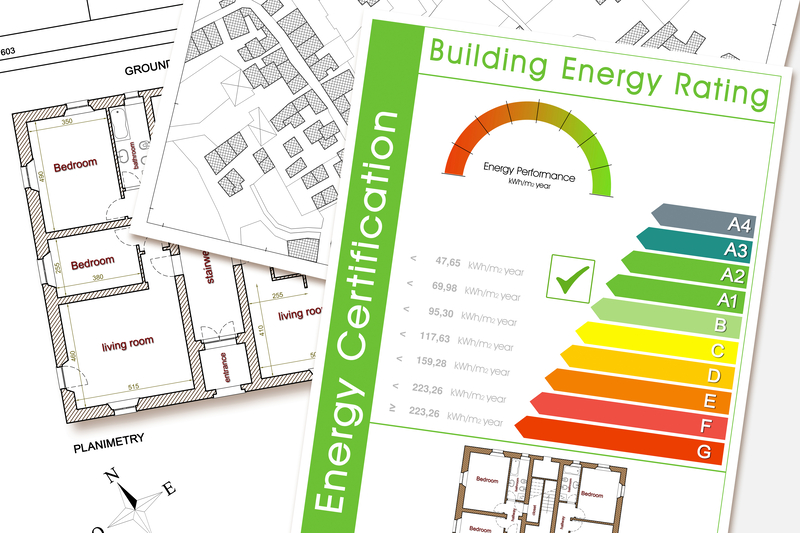
Passed as a part of the Greener Greater Buildings Plan, Local Law 87 put in place specific energy audit and retro-commissioning benchmarking requirements for all buildings over 50,000 gross square feet. It also applies to multiple buildings that combined are over 100,000 gross square feet on a single lot. These buildings must conduct regular energy audits and retro-commissioning measures.
The law was created in an effort to help building owners better understand their property’s energy efficiency and highlight areas that need improvement. This, in combination with the benchmarking guidelines set in place by Local Law 84, was designed to make energy efficiency a higher priority for NYC building owners.
What does LL87 require?
LL87 requires that energy audits and retro-commissions must be submitted in an Energy Efficiency Report, or EER, every ten years. To find the year your compliance is required to begin, look at the last digit of your tax block number. All tax block numbers besides 1 and 2 (which are due December 31, 2021 and 2022, respectively) should have already submitted their first report. All following reports will be due to the city again ten years later on the same date, December 31.
Your EER should include the following information:
- Basic information about your building
- List of current equipment
- Breakdown of your building’s energy use
- Energy conservation practices identified from the audit you plan to implement
- Measures you plan to include in your building’s retro-commissioning plan
What is an energy audit?

Word writing text Energy Audit. Business photo showcasing assessment of the energy needs and efficiency of a building Woman wear formal work suit presenting presentation using smart device
An energy audit analyzes how much energy a building uses. Your audit will give insight on your building’s current energy consumption rate and assess how efficient your energy currently is. Even though you’re only required to submit these reports every ten years, you should be benchmarking your energy consumption annually to ensure you’re making appropriate progress.
What is retro-commissioning of a building?
Retro-commissioning is essentially just making sure your equipment installation and performance is done correctly. Similar to how an energy audit analyzes your building’s overall energy use, a retro-commissioning plan analyzes the appliances actually using the energy. The goal is to improve your existing energy management system and/or to show you what replacements need to be made.
What is Local Law 88?
Like Local Law 87, Local Law 88 was passed as part of the Greener Greater Buildings Plan in an effort to drastically improve New York City building energy efficiency. The law requires the owners of commercial and multi-family buildings to improve the efficiency of their lighting systems and install tenant sub-meters to meet the NYC Energy Conservation Code by January 1, 2025.
How do I comply with LL88?
Your building(s) must comply with LL88 if it falls into any of the following conditions:
- Single building with at least 50,000 square foot of floor space
- Group of 2 or more buildings under the same tax lot, that combined add up to 100,000 square feet
- Group of 2 or more buildings under the condominium form of ownership, that combined add up to 100,000 square feet
If you are the building owner or a co-op and condo association, you are responsible to comply with Local Law 88. You also have the ability to delegate reporting to a consultant or your building manager. If your property is categorized as a certain occupancy group, it may be exempt from the efficient lighting upgrades and/or submetering. Be sure to check with your provider if you think your property may be exempt.
How do I upgrade to LL88 lighting requirements?

Local Law 88 lighting requirements are laid not laid out in the law, but in the NYC Energy Conservation Code. The requirements vary for each type of application, and there are two steps to energy code lighting standards. The first is how much lighting power is used in a given area, which is measured in watts of lighting per square foot. The second is lighting controls, which are things like switches, sensors, and timers.
Here are some tips to upgrade your building to have a light efficient design:
- Determine any exemptions in your existing lighting system
- Develop an upgrade and meter installation plan track your progress
- Install LED lights (or an alternative like compact fluorescent lights that will meet the same high-efficiency standards)
- Install a lighting control system (required for most commercial properties)
- Make sure your exit signs aren’t using any more than 5 watts
- Work lighting upgrades into standard leases (if applicable)
- Consider hiring a lighting consultant
- Work with your energy provider to ensure you’re meeting the code standards
Lighting system elements that meet NYC Energy Conservation Code requirements applicable after July 1, 2010, do not require an upgrade.
Benefits of Local Law 87 and 88

The biggest concern businesses have with green laws like these is the cost associated with them. Green energy is an investment, but it’s certainly one that is worth it for both your business and your community. The long-term savings combined with improving the environment will deliver an ROI that makes it all worth it.
Local Law 87 only requires you to submit your energy audit and retro-commissioning report every ten years, which gives you plenty of time to improve your energy consumption and efficiency. Take advantage of this time by creating a realistic plan that allows you to space out any costly upgrades. LL87 requirements also gets you in the habit of paying attention to how much energy you’re using as well as how much your building’s appliances use.
Local Law 88 uses sub-metering to send an accurate price signal to tenants, which helps reduce energy consumption in leased spaces. When tenants can accurately monitor their electric consumption, they are more likely to practice energy efficient habits. As a building owner, removing these utility expenses from your balance sheet will boost your bottom line as you reduce net operating expenses.
At Aggressive Energy, we understand how busy our clients are. You don’t have time to learn and keep up with the all the NYC Energy Compliance laws, which is why we do it for you. We’re committed to creating sustainable energy plans that are customized to fit our clients needs. If you’re ready to work with an energy provider you can trust, contact us today!
This article is your complete guide to installing commercial EV charging stations! Because as more and more Electric Vehicles (EVs) hit the road, you may want to consider getting a commercial EV charging station for your property. From real estate developers and property managers to clean energy companies, businesses of all kinds have all enjoyed the benefits of installing an EV charging station. In this article, you’ll learn everything you need to know about the types of EV chargers, installation and maintenance costs, and why your ROI will be worth it.
At Aggressive Energy, we’re committed to helping you make sustainable decisions for your building energy consumption and your bottom line. Our clients rest easy knowing that they have our team of experts to lean on for energy market fundamentals, regulatory updates, and risk management.
Read on to learn more about commercial EV charging stations!
What is EV Charging?

Just like your smartphone, an electric vehicle operates thanks to a battery – so, it won’t work if that battery has no electricity stored in it and will need to be recharged. That’s where EV chargers come in, and there are a few different types of EV chargers that all have specific uses and energy requirements. For example, commercial electric vehicle charging stations similar to the ones you’ve probably seen in parking lots employ voltages a good deal higher than an at-home charging station, which means it can charge batteries much quicker.
Before you can decide which is the best EV charger for your business, let’s take a look at the different levels of EV charging stations.
Related Post: How to Make Reducing Carbon Emissions a Priority
What are the EV Charging Station Levels?
- Level 1 Charging
- Level 2 Charging
- Level 3 Charging
What is a Level 1 charging station?
The level 1 charging station offers the slowest charge, but is perfect for drivers who choose to charge their EV’s overnight and travel a maximum of 40 miles per day. It adds anywhere from 3.5 to 6.5 miles of driving range per hour of charging time. This makes it a great option for properties with tenants or anywhere people will have plenty of time to charge. EVs all come with a cable that can be plugged into a standard wall outlet, no EV charger installation needed.
What is a Level 2 charging station?
Level 2 EV chargers have a much quicker charge but need a specific charging station called electric vehicle supply equipment (EVSE). They’re found in a lot of public, high-traffic places and add about 14 to 35 miles of range per hour of charging time. A dedicated 240-volt or 208-volt electrical circuit is mandatory when installing a level 2 charging station. These commercial EV charging stations use the same type of charging cable as a Level 1 EV charger, so any EV can plug in at a level 2 EV charging station.
What is a Level 3 charging station?
Level 3 charging stations are designed for commercial use. They facilitate DC fast chargers to provide the fastest charging time – usually about an hour – of all levels. DC fast-charging stations typically add around 10 miles of driving range per minute of charging time.
How Much Does a Commercial EV Charging Station Cost?

A level 2 commercial EV charging station costs roughly $6,000 to purchase and install. EV charger installation costs can fluctuate depending on your property’s electrical needs, distance to the circuit panel, and how the charging station is mounted. The price fluctuates based on what the specific user needs. The most inexpensive base equipment with the least installation requirements will set you back $2,500. A higher-caliber level 2 charging station cost is typically between $10,000 to $13,000.
Incentive Programs to Save Money on EV Charger Installation

If you install EV charging stations at your business, you can earn some generous grants and rebates. Applying for federal and state incentive programs helps businesses to attract EV drivers, with no expenditures paid by the business. Below are some of the incentive options available for you to apply. The best part is that you can stack these incentives, which can substantially lower your commercial EV charging stations cost.
-
ConEd Make Ready Program: Offers up to 100% of utility side infrastructure costs.
-
NYSERDA Charge Ready Program: Covers up to $4,000 per charging port.
-
Federal tax credits: Rewards up to $30,000 for commercial EV charger installation at your business.
-
Stacking various programs means your out-of-pocket cost is minimal.
Benefits of a Commercial EV Charging Station

There are several benefits of installing commercial EV charging stations at your property. Here are three big ways your ROI will be worth the upfront EV charging stations cost.
Attract people to your business
As more and more people purchase electric vehicles, having EV chargers on the property brings customers to your business. Electric vehicle sales globally totaled 2.1 million in 2019, which is a 40% increase over the previous year. Now is the ideal time to invest in EV charging station installation because the EV market is forecasted to grow to $2.3 trillion by 2041.
Support the green energy movement
While it may just be a nice amenity to offer your employees so they can get their electric car charging at work, it could also be making a bigger impact on the environment. One of the biggest concerns people have when considering purchasing an EV is the fear that they won’t be able to find a charging station when they need one. The more businesses that install EV charging stations, the more people feel safe making that commitment to an EV.
Related Post: Renewable Energy Trends and Green Energy Facts
Open an additional source of income
If you already charge tenants to park, then charging a small additional fee for an EV charger parking spot can provide an extra source of income with minimum effort needed. On average, businesses charge 39 to 79 cents per kWh. Additionally, charging for the length of use, or time parked in the spot, encourages employees to move their cars once they’re fully charged, making space for someone else to use the charger. Charging an additional fee for the time that a vehicle is parked in the spot discourages gas-fueled vehicles from parking in the spot just because it’s the first spot they see.
At Aggressive Energy, we’ll make sure you’re reaping the benefits of every sustainability incentive you qualify for. We offer our clients the guidance and customized product structure they need to be successful. Contact us today!
This post is your guide to benchmarking energy usage in your building! A crucial part of building an effective energy management system is tracking and analyzing your building energy performance.
Aggressive Energy is committed to helping our clients make the most sustainable choices for their energy consumption and their budget. Whether you’re just looking for energy benchmarking services or want to create an electricity plan that makes energy compliance easy, we’re here to help!
Read on to learn how to benchmark energy use, the benefits, and building benchmarking software!
What is Energy Benchmarking?

Energy benchmarking is the process of calculating and recording a building’s energy consumption. This data is then compared to its previous energy consumption levels and to the national average for similar buildings. Building owners use benchmarking to help themselves and their occupants understand the different ways in which they consume energy as well as identify areas they could practice energy conservation.
Internal vs. external energy benchmarking
Benchmarking for energy efficiency is classified as either internal or external. Internal energy benchmarking is the process of making comparisons within a single organization in order to define a baseline and best practices. External energy benchmarking is used to evaluate organizations in the same or a similar industry sector in order to determine which companies perform best in class.
Related Post: Energy Conservation Tips to Reduce Business Expenses
How to Benchmark Energy For Buildings
It’s important to plan out a methodical approach to building energy benchmarking. Planning ahead is key to creating a benchmarking process you can rely on for years to come. The goal of developing a benchmark plan is to define the desired outcome of its execution and of its results. What do you hope goes well during the benchmarking process? What do you hope to avoid? What do you anticipate the results of your building’s energy benchmark report to be, and what’s your best and worst-case scenario? These are all questions you should be sure to ask yourself. Here are three steps to help you benchmark energy for your building.
Delegate and communicate
The energy benchmarking plan should include the benchmarking team members involved, their role, relevant details on the data collection process, and the plan’s implementation. Developing a detailed benchmarking strategy and presenting it to team members effectively helps everyone involved to understand what’s expected of them, the importance of benchmarking, and keeps everyone on the same page. Additionally, make sure that staff members are trained, as this is one of the most effective strategies to assure high-quality reporting from the start.
Choose Your Energy Benchmarking Tool

Benchmarking and energy tracking solutions can be as simple as spreadsheets or as complex as custom-built web-based platforms. The selection of a benchmarking tool should be decided based on the data requirements for tracking progress toward the benchmarking program’s objective. If you aren’t sure which energy benchmarking software is compatible with your needs and budget, contact us at Aggressive Energy and we’ll get you set up for success through our Energy Solutions 360 platform!
Collect and organize data
The first step in collecting data is identifying what areas you actually need data on. This typically requires an energy audit to identify any quirks or need-to-know information about how your building and its appliances operate and consume energy. Before you begin collecting data, be sure to come up with specific goals and questions you want the data to be able to answer. This will help you make the most efficient use of time and give your data collection some much-needed structure.
Keep in mind you’ll need to collect both internal and external data. External data can be gathered through the use of energy benchmarking tools such as ENERGY STAR Portfolio Manager. Internal and external data sources combine to provide businesses and property managers with the information they need to make sound energy management decisions.
Verify results
After data collection is complete, it’s time to verify the quality of your energy benchmarking results. This is the phase where you double-check for accuracy. First, verify the small things such as having the appropriate facility type selected and that facility names are all accurate (i.e. remove any sample facilities). Then, filter results for any energy usage intensity scores that are surprisingly high or low in relation to the national median as recorded by the Commercial Buildings Energy Consumption Survey, or CBECS.
There will be certain areas of your benchmarking report where you aren’t able to verify 100% accuracy, so it’s a good idea to have a system in place that will fill in gaps wherever needed. It also wouldn’t hurt to hire a third party to perform the final onsite verification, especially if you’re new to building energy benchmarking and/or have a lot of data to cover.
Interpreting Your Building Energy Performance Benchmarks

When done effectively, energy data benchmarking and an analysis of its results provide insight into the effect of operations on energy use and consumption. Be sure to document energy usage in a way that’s useful and intuitive for everyone in your organization to understand. Choose a format that works for you and your team, whether that be something as straightforward as a graph depicting the building’s energy use or something a little more complicated like a statistical model.
In order to fully comprehend your benchmarking results, use the baseline of building energy performance and the expectations you established beforehand. This is something you’ll need to do every time so that you accurately track your building’s improvements (or lack thereof).
Related Post: Why Solar Power For Business is Worth The Investment
Benefits of Energy Benchmarking

Benchmarking the energy performance of commercial buildings is a critical component of an organization’s energy management plan because you can’t manage or improve something you don’t have details on. Benefits of energy use reporting include:
- Detailed, verified information on energy consumption and areas of energy use
- Increased general consciousness of energy efficiency and improved usage behaviors among building occupants
- Identifies what areas of energy consumption need improvement
- Identifies what areas of energy consumption are working well and can be replicated
- Makes energy compliance easier
- Short-term and long-term savings
Energy reporting is a reliable energy management technique that has been shown to have a positive – and reasonably quick – impact on your bottom line and ensures your business comes out on top.
At Aggressive Energy, we’ve got the dedication and resources to set you up for success. We’ll help you create a building energy benchmarking process and establish an energy management system (or re-assess all of the above) to help you meet your sustainability and financial goals. Contact us today!
This article is your complete guide to understanding the question, “is natural gas renewable?” When is comes to fuel sources, it can be quite difficult to understand if natural gas renewable or nonrenewable.
So is natural gas renewable? There isn’t simple yes or no answer. The main reason is it depends on how the natural gas was extracted for use. In this blog post, we’ll cover the basics of what natural gas is, what forms of natural gas are renewable and nonrenewable, and why it matters.
Aggressive Energy is committed to helping our clients make the most sustainable choices for their energy consumption and their budget. Whether you’re looking for ways to use natural gas responsibly or looking to make a switch, we guarantee we’ll create an energy plan that works for you.
Read on to learn if natural gas is renewable or nonrenewable and more!
What is Natural Gas?

When wondering is natural gas is renewable, you have to understand what it is! Natural gas is a a naturally occurring hydrocarbon that humans can use as a fuel source. This gas is odorless and colorless and can be very dangerous if not handled properly.
Where does natural gas come from?
So, how is natural gas formed? The process might not be what you think. Natural gas is a fossil fuel energy source. These fuels are formed from the decomposition of plants and animals that were entombed deep beneath the Earth. Eventually, after thousands (sometimes millions) of years, they fossilized and became natural sources of energy. However, because natural gas is found exclusively in reserves deep beneath the Earth’s surface, it’s not very convenient to extract. As a result, it causes environmental harm in the process.
Related Post: Renewable Energy Trends 2021
Is Natural Gas Renewable? – What is Natural Gas Used For?
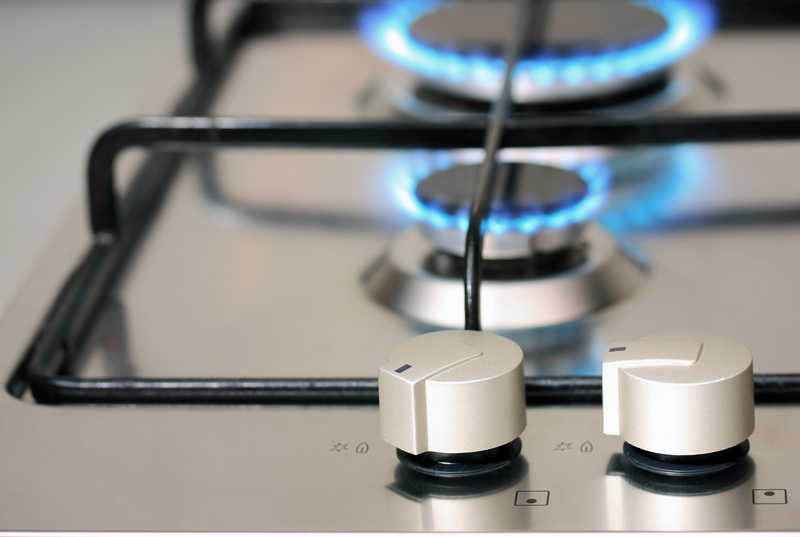
The United States uses natural gas largely to produce heat and generate electricity. Therefore, it is smart to ask if natural gas is renewable, because it is a common energy source in the US. In the commercial sector, the uses aren’t that different than a that of a residential home, but are done so on a much larger scale.
For example, they often use natural gas to power industrial-sized kitchen equipment and they have a lot more space to light and heat/cool than the average home. Plus, they’re typically powering these things for longer periods of time. In 2020, the commercial sector accounted for around 10% of all natural gas consumption in the United States, and natural gas was the source of 19% of the commercial sector’s total energy consumption.
What is the Most Common Natural Gas?
Methane is the most commonly used natural gas on Earth. Natural gas and crude oil wells are frequently filled with methane and as well as hydrocarbons like nitrogen and carbon dioxide that produce energy when burned. Though they differ in chemical structure, all of these gases can be utilized in the creation of energy under certain circumstances.
What’s the Difference Between Renewable and Nonrenewable Resources?
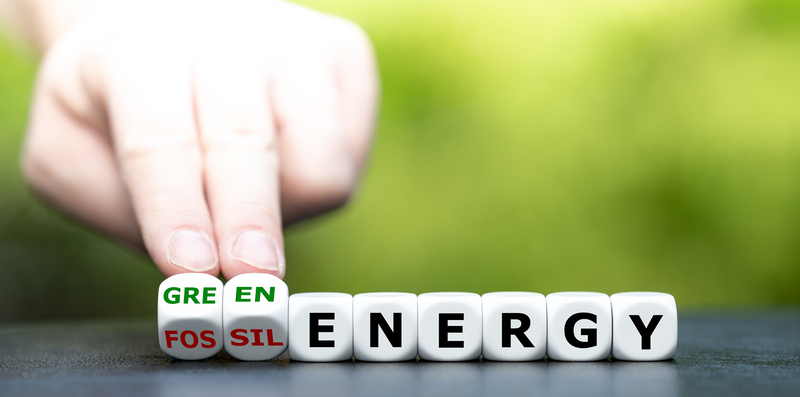
The difference between renewable and nonrenewable resources is that renewable resources are available infinitely and nonrenewable resources are not.
Renewable natural energy is an unlimited resource that will always continuously replenishes its supply on its own, no matter how much of it we use. Because there’s an infinite amount of these resources and they’re harnessed naturally, renewable energy sources are considered to be the green, sustainable alternative to fossil fuels such as natural gas, coal, and oil. Examples of renewable resources include wind power, solar power, hydropower (water), to name a few.
As we mentioned earlier, nonrenewable energy is comprised of fossil fuels, which use fossils as their power source. On average, fossils take about 10,000 years to form. So once we use the natural gas found inside of the Earth, we won’t be able to replenish the amount we used for thousands of years.
Examples of Renewable and Nonrenewable Resources
Renewable resources
- Solar energy
- Wind power
- Hydroelectric power
- Geothermal
- Biomass energy
Nonrenewable resources
- Oil
- Coal
- Nuclear
- Natural Gas
Related Post: Benefits of Using Clean Energy
Is Natural Gas Renewable or Nonrenewable?
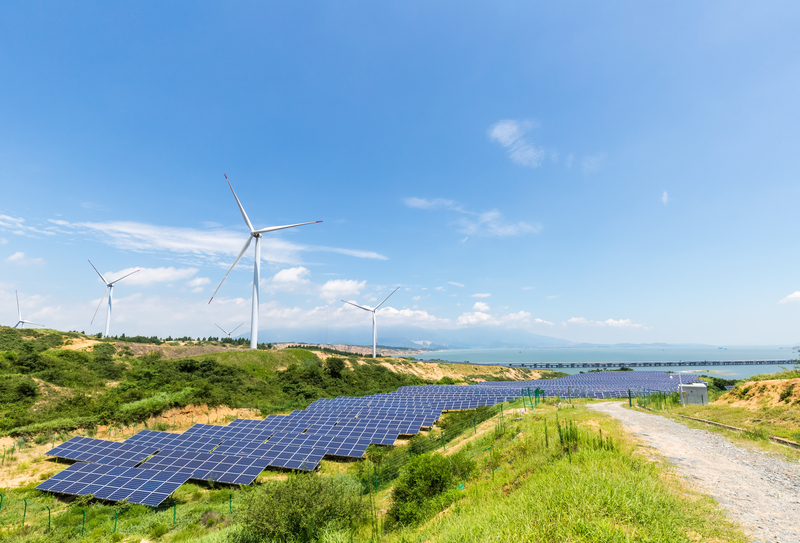
The short answer is no, the most commonly used natural gas is not a renewable resource because it comes from fossil fuels, which makes it a nonrenewable resource. However, there are two different types of natural gas that can be used for power: Natural gas produced from fossil fuels or produced from biomethane. However, it’s important to note here that renewable resources are not always the most sustainable or clean energy options.
How is biomethane made?
Biomethane, or renewable natural gas, is made by the biogas that’s extracted from decaying organic materials such as human waste. Basically, it’s powered by things such as landfills and farms where waste is constantly being replenished. This is why biomethane-produced natural gas is considered renewable but isn’t the greenest alternative since it’s powered by landfills.
How much natural gas is left?
There are 6,923 trillion cubic feet of nonrenewable natural gas reserves left in the world as of 2017. Based on global consumption rates, that will last us about 52 years. As time goes by and those reserves dwindle, the price of using natural gas will increase both in monetary costs and environmental costs.
Is Natural Gas Bad?

When we burn natural gas, greenhouse gases like carbon dioxide are released into the environment. Though natural gas doesn’t emit as much greenhouse gas as coal or oil, these emissions harm the environment and cause climate change because they trap heat from the sun close to the Earth’s surface, heating its temperature. It also pollutes the air, which harms the health of our environment as well as the health of our crops, animals, and our respiratory systems.
Why should we stop climate change?
If you’re already wondering if natural gas is renewable, then you’re probably conscious about climate change already. The negative effects of global warming will continue to increase the number of wildfires each year and longer periods of drought in some areas, and more intense tropical storms and flooding in others. Flooding could be caused in two ways – by heavier rainfall and by melting ice in areas like the Arctic Sea – which increases the risk of major cities being flooded. Not to mention the impact on our food supply if we can’t grow many crops to feed us as well as the animals we eat.
How long do we have to stop climate change?
Scientists believe we have until 2050 to reduce our carbon emissions. As a result, more and more world leaders are committing to doing their part in their respective countries, including President Biden in the United States. In April 2021, he committed to reducing U.S. carbon emissions by 50% by the year 2030, which means we have to adjust our energy consumption and management now.
Related Post: How to Make Reducing Carbon Emissions a Priority
Is it Ethical to Use Natural Gas?

Natural gas, renewable or nonrenewable, can be used ethically as long as it’s used responsibly. That means monitoring and reducing your energy consumption and switching to green energy sources wherever possible. You can conserve energy in your building by replacing things such as regular light bulbs with energy-efficient ones, or by installing an energy management system to ensure you’re only using a set amount of energy.
Why are fossil fuels considered nonrenewable?
The answer is – they take forever to make! While the natural process of creating fossil fuels is always happening, it takes millions of years to complete. Therefore, we are depleting these natural resources before they have time to regenerate. That is why fossil fuels are considered nonrenewable!
Tap Into Our Energy Expertise
Are you ready to become more energy efficient? Speak with an expert at Aggressive Energy by calling our office at 888-836-9222 or leaving us a message on our contact us page! Aggressive Energy offers a variety of energy plans for small businesses as well as energy efficient upgrades for commercial buildings.
You can also check out The Energy Professor if you’re looking to save money on your next electric bill with their Energy Savings Tool!
Local Law 92 and 94 were passed alongside Local Law 97 in the NYC Climate Mobilization Act of 2019. These laws mandate the use of sustainable roofing solutions – or green roofs – in new buildings as well in existing roofs that are renovated or replaced. In this article, you’ll learn everything you need to know about green roof systems and NYC Local Law 92 and 94.
Aggressive Energy is committed to making NYC local law compliance a breeze for our clients. Whether you’re looking to maximize the benefits of clean energy or just looking for the best electricity rate, we guarantee we’ll create an energy plan that works for you.
Read on to learn about the benefits of green roofs and Local Law 92 and 94 compliance!
What Does Local Law 92 and 94 Require?

Local Law 92 and 94 adjusted the NYC building code to require sustainable roofing solutions, which are defined as a solar panel power generation system, a green roof, or a mix of the two. The specific criteria varies depending on the size and slope of each roof as well as the occupancy rating of the building, but the law applies to all buildings, both residential and commercial. Local Law 94 makes up the bulk of the green roof legislation, updating the “cool roofs” requirements of Local Law 21, while Local Law 92 adjusts the requirements for smaller buildings.
LL 92 and 94 apply to renovations including both vertical and horizontal construction to an existing roof that requires a permit. Certain roofs, such as occupied roofs and required building setback roofs, have exemptions. They’re also one of the first of the laws introduced by the Climate Mobilization Act to have gone into effect already, as most of them don’t start until 2024. These laws are predicted to result in New York City having one of the most sustainable skylines in the world.
Local Law 92 and 94 compliance
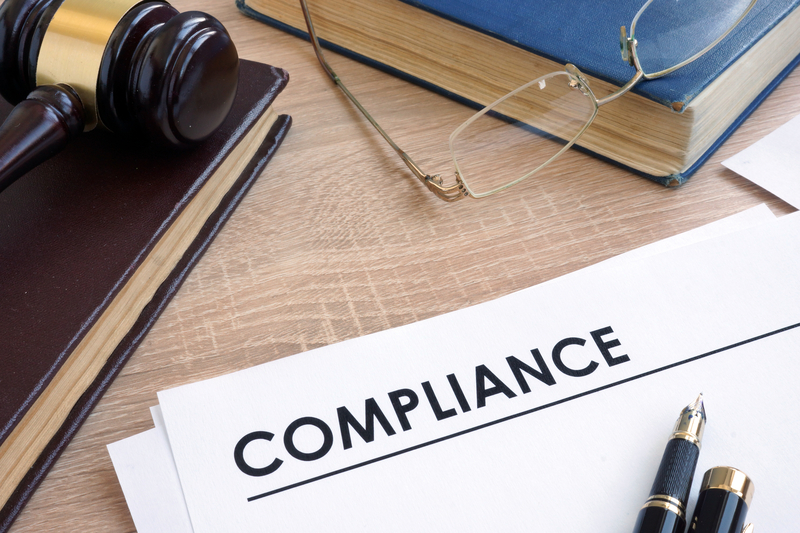
New construction and major renovations will have to include the installation of a green roof system. Owners of buildings that are undergoing this construction should take these steps:
- Identify which sustainable roofing option – green roofs, solar panels, or both – is the best fit based on the roof’s space and the amount of shade it’s in.
- Have a structural analysis of the roof conducted by a professional.
- Make sure all possible options comply with all applicable building codes.
Buildings have the ability to choose to install either a green or solar roof. Some building owners fear their roofs have too much shade for either option. If you begin exploring your options and find this is the case for your roof, that would be considered an unfavorable site condition and compliance would not be required. Keep in mind that shaded buildings may have enough shade to make solar panels not an option, but green roofs can often flourish even if they’re in the shade for most of the day.
It’s important to note that solar or green roofs aren’t included in the basic safety or habitability requirements of buildings, so an incomplete green roof installation shouldn’t cause any delay in your receiving a temporary certificate of occupancy. Additionally, while you have the choice to choose between having a green or solar roof, we encourage you to utilize both options if you have the ability to!
What is a Green Roof?

A green roof is a layer of plant life installed on a building’s roof. These plants soak up rain, giving the building it’s installed on an additional layer of insulation. This helps maintain the desired indoor temperature while also reducing the building’s carbon footprint and increasing its energy efficiency. A green roof system’s design may vary from roof to roof, but they all have the same core elements of waterproofing, water retention, drainage, soil or another growing medium, and of course, the ability to grow plants.
What are the benefits of green roofs?
The benefits of green roofs include reducing the increased temperatures that surround areas with a higher population and improving the quality of the air and water in these areas. It also reduces energy costs and carbon emissions. Plus, they give the wildlife in these areas a home. Green roofs benefit building owners by lowering their energy consumption and cost, and also helps them meet the energy efficient standards set for them by other local laws. They also provide overall higher insulation than a standard roof system. Combine the benefits of green roof systems with the benefits of solar power for business, and your ROI is well worth any upfront cost.
Green Roof Installation in NYC

Now that you have a working knowledge of what a green roof is and Local Law 92 and 94 compliance, it’s time to start brainstorming and planning your green roof installation. Read on for our advice and tips on installing a green roof in New York City.
Green roof cost and available savings
The average cost to install a green roof ranges from $10-$20 per square foot depending on its scale. For an average extensive green roof it’s about $10-$12.50 per square foot and $16-$20 per square foot for a more detailed intensive green roof. However, the cost usually decreases when it’s included as a part of the roof’s design from the beginning of the construction. This also helps you avoid any double work. Annual green roof maintenance costs about $0.75-$1.00 per square foot.
If you’re eligible and can demonstrate the energy savings from the installation, you may be able to receive a Property Assessed Clean Energy loan (PACE) to finance the installation. PACE is available for green or solar roofs in all building types undergoing new construction as well as renovations, excluding 1-2 family properties. There’s also savings to be found in the NYC Green Roof Property Tax Abatement Program.
Green roof installation timeline and requirements
Commercial installations take up to two weeks, mostly because they usually have larger roofs, while residential installations typically only take a few days. Remember to allow plenty of time for applicable filing and permits you’ll need to finish the project. The best time of year for green roof installation is in the spring. This is because planting in the high temperatures of the summer will require additional irrigation, and vegetation planted in the fall may not have enough time to get established before winter. Some plants can be installed while dormant in the winter. Plants usually take about 3 years to get fully established on NYC green roofs.
Though you could install your own green roof, it’s recommended to hire a professional to lead you through the process of designing it, obtaining the right permits, securing any available funding resources, and ensuring you have an effective installation and maintenance system.
At Aggressive Energy, we’ve got the connections and resources to set you up for success. We’re experts at NYC local law compliance and know how to identify opportunities to reduce emissions from your building while increasing its energy efficiency. Contact us today to create a sustainability plan that’s customized to work for you!
As 2021 progresses, it’s important to look at renewable energy trends from the last 12 months to help us get an idea of the future of renewable resources and the sustainable energy sector. In this article, we’ll examine green energy stats from 2020 and the sustainable energy trends that have carried over to 2021 in an effort to inform you, so that you’re able to create the necessary sustainability goals for your business.
At Aggressive Energy, we’re experts on alternative energy. We’re committed to educating our customers on the many benefits of using clean energy and working collaboratively to meet your energy goals.
Read on to learn about trends in the renewable energy industry!
Overview of 2020 Renewable Energy Stats

- Total US energy consumption dropped 7.8%, which was the largest decline in 30 years.
- Renewable energy sources had a record-breaking 11% year-on-year rise in power grid contributions.
- Renewable sources generated one-fifth of total U.S. power.
- Coal’s contribution to U.S. power generation fell to 19%.
- Wind and solar power built a combined 33.6 GW, exceeding their previous records despite a rocky start to the year.
- Over 100 companies made decarbonization commitments – 65 companies joined the RE100 initiative, while 59 joined EP100.
Renewable Energy Trends
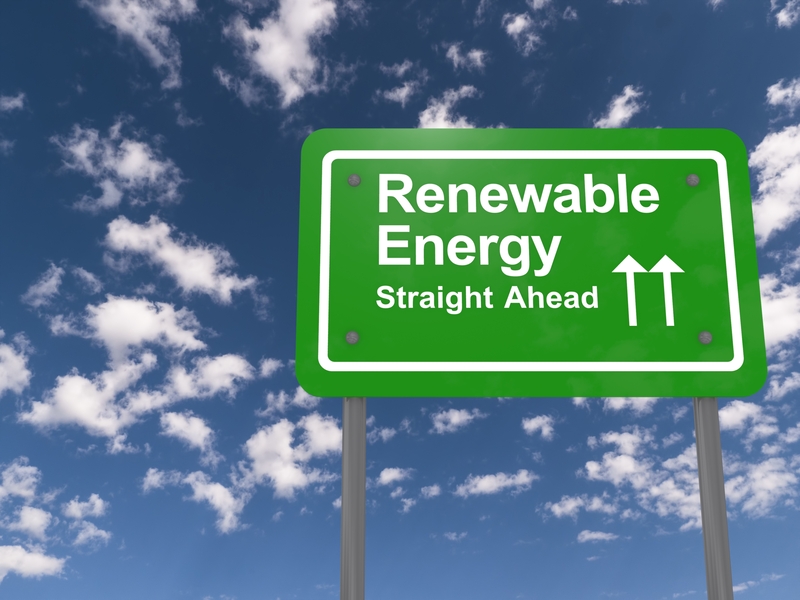
The Renewable Energy Industry Proved Itself
Like every industry, the Covid-19 pandemic created a number of hurdles for the sustainable energy sector that threatened its progress. In the second quarter of 2o20, several wind power and solar energy equipment manufacturing plants experienced declined (or halted) production. Other renewable energy projects faced similar declines in activitiy, including a significant drop in solar panel installation rates. By July, it looked like 2020 would be the least productive year for the renewable energy industry by far.
Miraculously, 2020 ended up being the industry’s most productive year yet. The solar power sector reached a new high of 16.5 GW capacity built, while the wind energy sector constructed a whopping 17.1 GW of capacity. Renewable energy trends show a steady rise in contribution to U.S. energy production and highlight increased endurance across the sector as a whole.
This is apparent not just from the way it was able to bounce back, but also because it was able to do so while its manufacturers simultaneously focused their efforts on ensuring Covid-19 testing sites were efficiently powered and heated.
Related Post: Why Solar Power For Business Is Worth The Investment
Companies With Renewable Energy Goals

Over the last few years, more and more companies have made public statements claiming support for the green energy movement. However, simply stating your support for clean energy is no longer enough. Big corporations know this, which is why companies are going a step further and committing to renewable energy goals that have tangible results.
The RE100 and EP 100 initiatives
As a result, 65 companies joined the Climate Group’s RE100 initiative, which pledges to offset the entirety of their energy consumption with renewables. This brought the total number of companies to 285. Additionally, 59 companies joined the EP100 campaign. With a total of 123 companies, EP100 pledges to double their energy productivity by 2030.
Green energy contracts signings declined
Due to the pandemic, a large portion of the nation’s workforce went remote. This resulted in the number of signed carbon-free energy contracts dropping for the first time in five years. Many companies don’t know the capacity in which their employees will return to the office, if they do at all. Not knowing their energy needs definitely plays a role in this energy trend.
Even with less signed contracts, companies know that it’s no longer enough to make promises with no follow-through. Their customers and employees expect to see a bigger commitment from them as well as a plan for it. Plus with government-mandated emission reduction requirements and clean energy tax credits available, they don’t have much room to not commit to green energy sources.
Long-Term Decarbonization Policies
In December 2020, Congress passed the second Covid-19 relief stimulus package. While the first package did not include any renewable energy incentives, the second one included massive grants for U.S. Energy Department research. It also expanded renewable resources and carbon capture technologies tax credits. Specifically, the solar and wind production tax credit (PTC) and the investment tax credit (ITC).
PTC and ITC for land-based wind were extended for one year at 60% of the project’s full value, while solar ITC was extended two years at 26%. Tax credit for carbon capture was also extended by two years. The legislation also limited hydrofluorocarbon emissions, which is a huge step in the right direction to fight climate change.
In 2021, the Biden administration has set the stage to convert renewable energy trends into real growth for the sustainable energy sector. After making climate change a main focus of his campaign, President Biden re-committed the U.S. to the Paris Climate Agreement. He also introduced the American Jobs Plan, a $2 trillion infrastructure proposal. If signed into law, the plan would be one of the biggest government attempts to reduce carbon dioxide emissions – something he recently pledged to cut in half by 2030.
Green Energy Innovations Make Renewable Energy More Accessible
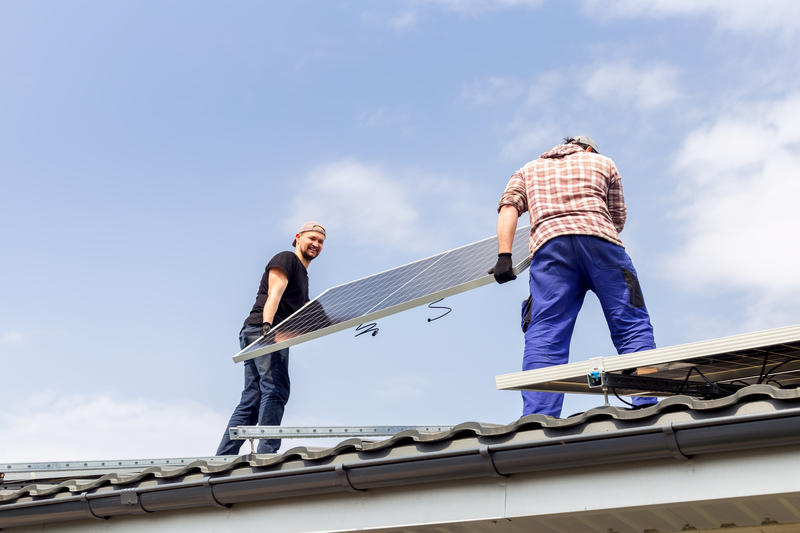
By now, it’s safe to say that most people are on board with renewable energy trends. However, for some people, clean energy just isn’t as accessible or cheap as fossil fuels due to limited access in their location. Green energy innovations have skyrocketed accessibility by introducing more and more alternatives to the energy market.
All the recent investments into new trends in renewable energy technologies have expedited the commercialization timeline of clean energy. As a result, we’re seeing more and more up-and-coming renewable energy companies emerge. A lot of these are traditional energy companies joining the market as multi-sector providers, which is predicted to streamline the eventual merge of the renewable energy sector with the traditional.
This allows energy providers like us to create hybrid plans for customers that help them make the switch from nonrenewable to renewable resource electricity over a longer period of time. At Aggressive Energy, we’ll i
Contact us today to learn how we can work for you!
Reducing carbon emissions is key to combat climate change. With so many businesses and individuals interested in how to solve climate change we wanted to take some time to explain how you can make an impact.
In this article, we’ll cover all the basics of what carbon dioxide emissions from buildings are and why reducing greenhouse gas emissions is well worth the investment. We hope you find this information helpful and please be sure to reach out to us to learn how we can help you increase your energy efficiency and decrease your carbon emissions!
So if you’re ready to learn about how to combat climate change read on!
What Are Carbon Emissions?
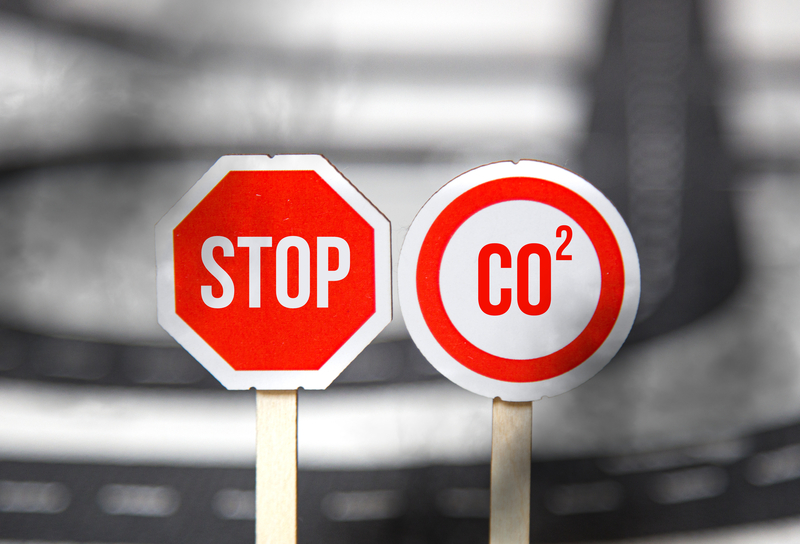
Carbon emissions refer to the release of carbon dioxide into the air during the combustion of fossil fuels. They make up the majority of greenhouse gas emissions, which is the biggest cause of climate change. The amount of greenhouse emissions made by a building, city, country, and so on is known as its carbon footprint.
What causes carbon emissions?
CO2 emissions occur during the combustion, or burning, of fossil fuels such as coal, natural gas, and oil. Another huge factor is forest degradation. When trees are destroyed, their carbon is released into the atmosphere as carbon dioxide.
How do carbon emissions cause climate change?
High levels of carbon dioxide emission cause climate change by trapping heat from the sun close to the surface of the Earth, heating its temperature. Climate change is essentially the catch-all term for global warming, intensified natural disasters, rising sea levels, infertile soil for agriculture, and more.
Related Post: Energy Conservation Tips to Reduce Business Expenses
How Much Do Buildings Account for Carbon Emissions?
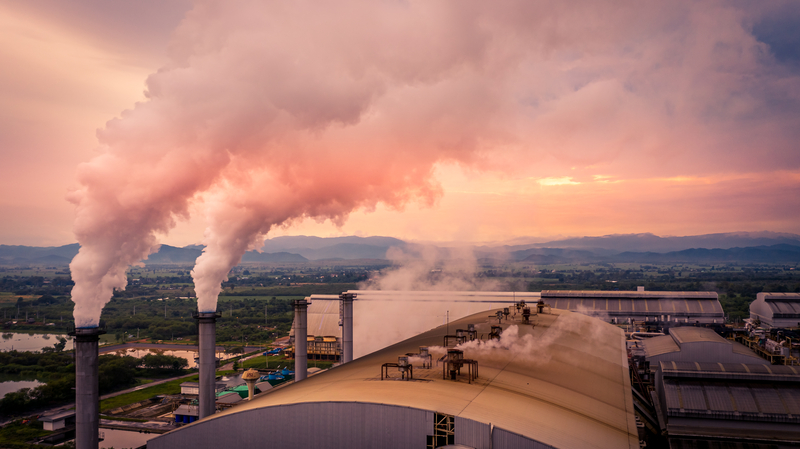
In 2019, energy consumption from all buildings – commercial and residential – indirectly accounted for over 30% of all US carbon emissions. This amount was an all-time high. 2020 would have probably looked similar, but US and world greenhouse gas emissions plunged as a result of the COVID-19 pandemic. Buildings contribute to emissions in two ways.
- Direct emissions are a result of burning fossil fuels like natural gas for heat.
- Indirect emissions are a result of using energy from power plants that burn fuel to generate electricity.
Directly, buildings account for about 12.5% of greenhouse gas emissions in the US.
How to Start Reducing Carbon Emissions

Reducing greenhouse gas emissions from buildings as a building owner is intimidating, to say the least. You’re in an unprecedented position. The good news is, you’re not alone. More and more companies are recognizing the need for change and calling for action.
However, just because you recognize the need doesn’t mean you know how to actually take action. That’s why we’re giving you some actionable items to implement as steps of your very own emissions reduction plan.
Review state guidelines for energy code compliance
President Biden’s recent commitment to reduce the carbon footprint of the United States and cut 50% by 2030 as part of the country’s pledge to the Paris climate agreement is not the only thing you need to be aware of. Each state has a set of energy codes for buildings.
The energy codes help in reducing carbon emissions from construction as well as buildings. State and local governments oversee energy code compliance, so be sure to research codes and benchmarking requirements for your area. This will help you get an idea of what your next steps should be.
If you’re a building owner in New York City, you’ll need to know about compliance with local laws, such as Local Law 97 which was created in an effort to combat the city’s extreme levels of CO2 emission. If you’re not in NYC, it’s still a good idea to read the requirements these local laws set there. They may not apply to you, but you’ll get a decent understanding of what to potentially expect from your own city in the future.
Start the switch to carbon-free energy
Carbon-free energy is found in green energy sources like hydro, wind, and solar power. These energy sources do not emit carbon dioxide when they’re converted into electricity. You can reduce carbon dioxide emissions from buildings directly by doing things such as installing solar panels and switching from natural gas.
For this step, it’s a good idea to include your energy provider in the conversation. If they’re anything like we are at Aggressive Energy, they’ll help you identify any areas in your energy infrastructure that could be done cleaner and more sustainable. If they’re not like us, give us a call and we’ll get you on the right track!
Set specific (but attainable) goals
Remember, you don’t have to come up with a detailed plan in one sitting. On the other hand, you also shouldn’t wait much longer to get started. There are plenty of ways you can start small. After doing your research, start assessing your current energy infrastructure. Your plan may be pretty straightforward, or it might require a bit of time and investment.
Whichever it is, take it step by step and create a plan to reduce emissions that’s sustainable to your business. Break down the overarching goal into separate milestones big or small, then hold yourself accountable to reaching them
Is Reducing Carbon Emissions Worth The Cost?
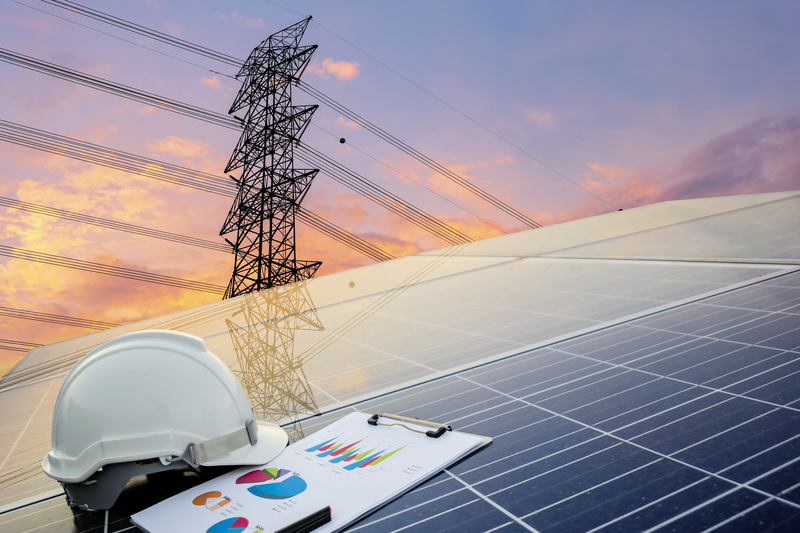
The only perceivable downside to fighting climate change is the upfront cost. However, the future of our planet depends largely on the actions we take to reduce greenhouse gas emissions over the next decade.
The cost may still seem alarming, but keep in mind the return on investment will counteract that in the long run. Renewable resources will cost your business less than if you were to continue to use fossil fuels.
That’s not the only long-term benefit, either. The Biden administration is placing a lot of emphasis on creating clean energy industry jobs through their efforts to combat climate change. Investing in reducing carbon emissions is also an investment in the clean energy industry that creates jobs in your community.
When creating a plan to make carbon-free energy a priority, having an experienced energy provider will save you an abundance of stress. At Aggressive Energy, we’ll help you set and meet even the most ambitious energy management goals at a pace that works best for you.
We understand the commitment it takes to power a business, which is why we’re committed to giving our customers value-added services like 24/7 customer support. Whatever it is, we’ve got the resources to get you where you want to be.
Contact us today to learn how we can work for you!